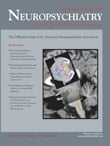To the Editor: Huntington’s disease is an inherited progressive brain disorder that causes a variety of motor, cognitive, and psychiatric disturbances. Hyperkinetic motor disturbances such as chorea, ballism, and athetosis are seen in this disease. Although there is no definite treatment for the disease, treatments that decrease the symptoms are available. It seems necessary to introduce novel effective therapeutic methods for Huntington’s disease.
Healthy lifestyle movements include different rhythmic motions such as walking and swimming. It is hypothesized that these movements are produced by sets of coupled and synchronized neurons, and these structures are introduced as central pattern generators.
1We suppose that the movement disorders seen in Huntington’s disease, such as gait disorder, are caused by the disordered synchronization of a number of neurons resulting in the formation of an abnormal central pattern generator. Some analyses on stride-time intervals of healthy and Huntington’s disease patients show that stride-time intervals have long-term correlation and display a chaotic behavior in healthy persons. In Huntington’s disease patients, the long-term correlation is absent and random oscillations appear.
2 The manifestations of these oscillations reinforced the hypothesis that a central pattern generator is created by the disease.
We modeled Huntington’s disease with this hypothesis in mind, and the results were in accordance with our hypothesis. We supposed that the disorder would be alleviated if the faulty synchronization of the neurons is diminished.
It seems that one of the main mechanisms of removing the abnormal synchronization of neurons is deep brain stimulation. The method has been employed to treat Parkinson’s disease and has shown good results. Some theories about the formation of synchronization in Parkinson’s disease are available.
3 We propose that deep brain stimulation may be useful in treating Huntington’s disease.
In accordance with our model, a few studies have used deep brain stimulation as an experimental way to treat Huntington’s disease. A treatment by Moro et al.
4 that used bilateral globus pallidus stimulation on Huntington’s disease patients showed hopeful results. Temel et al.’s
5 use of deep brain stimulation on a rat model of Huntington’s disease improved cognitive and motor symptoms in the model. In addition, a Fawcett et al.
6 study using deep brain stimulation on some Huntington’s disease patients showed decreased prosaccade latency, total movement time, and the number of correctly executed trials, as well as increased saccade gain.
We conclude that the central pattern generator hypothesis of Huntington’s disease may be valid, and deep brain stimulation can be a suitable method to ameliorate Huntington’s disease symptoms. More experiment results are needed to validate our study.

